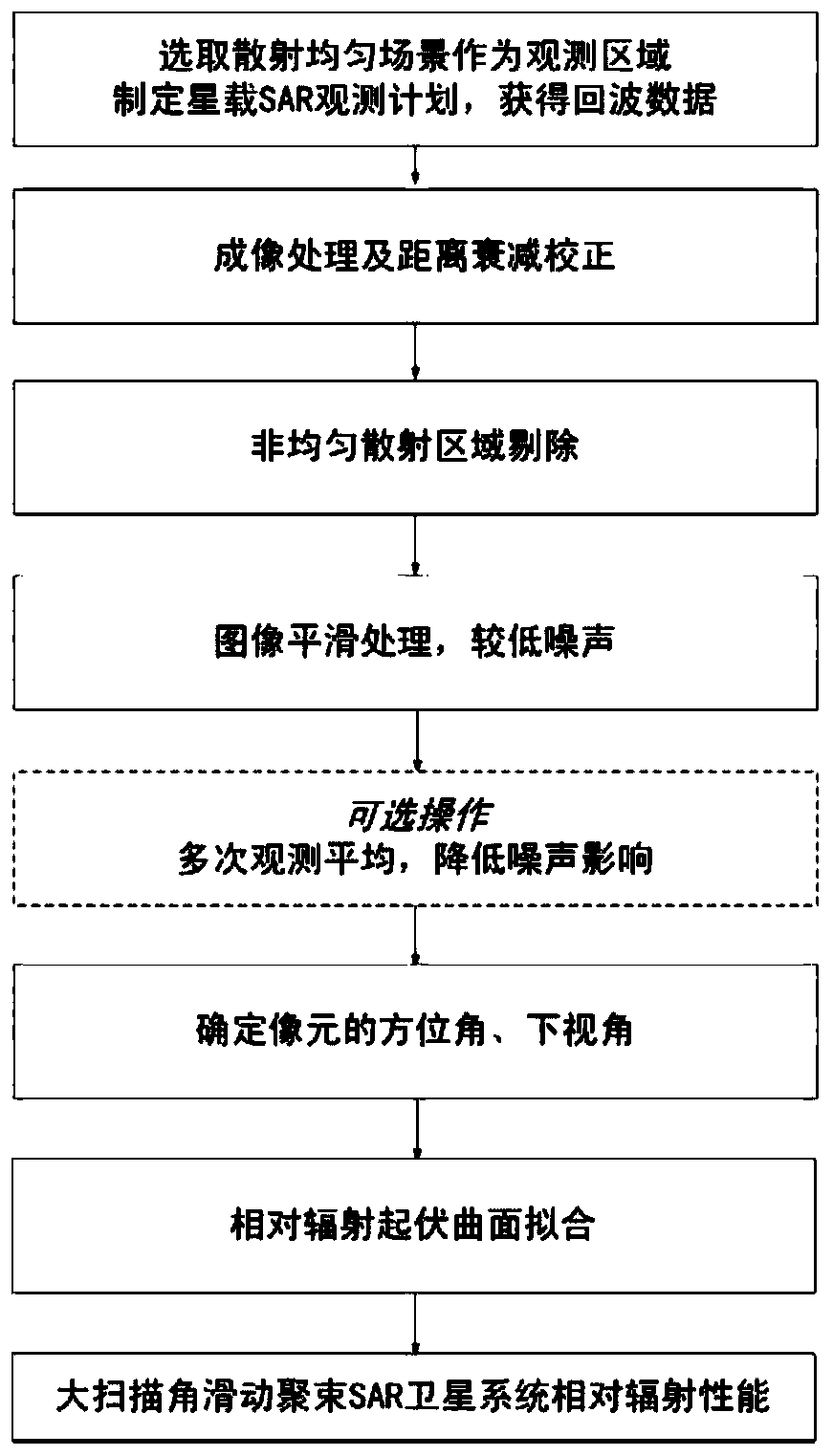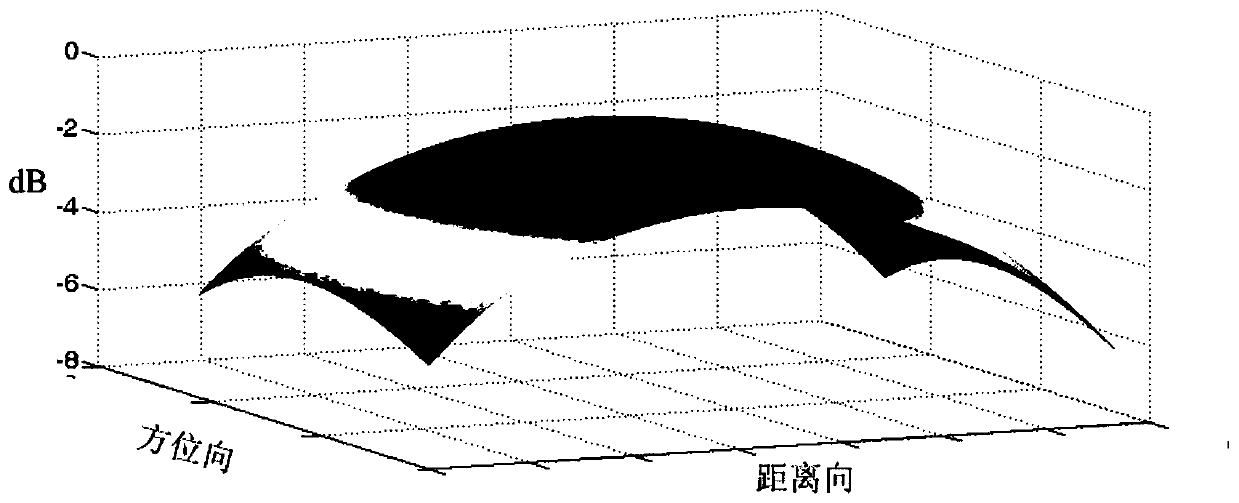A method for measuring the relative radiation performance of large scanning angle sliding spotlight SAR satellite system
A relative radiation and sliding beamforming technology, applied in the field of remote sensing satellites, can solve the problems of uneven azimuth radiation, uneven range radiation, and difficulty in pattern measurement, and achieves reduced noise impact, high measurement accuracy and efficiency, The effect of improving image radiation quality
- Summary
- Abstract
- Description
- Claims
- Application Information
AI Technical Summary
Problems solved by technology
Method used
Image
Examples
Embodiment Construction
[0015] The basic idea of the present invention is to use the uniform scattering scene as the observation area, on the basis of removing the non-uniform area, use the smoothing window to reduce the noise influence, and use the method of two-dimensional polynomial fitting to obtain the relative radiation characteristic measurement result of the system,
[0016] The present invention will be further described in detail with reference to the accompanying drawings and specific embodiments.
[0017] The present invention provides a method for measuring the relative radiation performance of a sliding spotlight SAR satellite system with a large scanning angle, the process is as follows figure 1 As shown, the method includes the following steps:
[0018] Step 1: Select the imaging area. After the SAR satellite and its ground data processing system have completed system performance tuning, the scene with uniform radar backscatter is selected as the imaging area.
[0019] In the spe...
PUM
 Login to View More
Login to View More Abstract
Description
Claims
Application Information
 Login to View More
Login to View More - R&D
- Intellectual Property
- Life Sciences
- Materials
- Tech Scout
- Unparalleled Data Quality
- Higher Quality Content
- 60% Fewer Hallucinations
Browse by: Latest US Patents, China's latest patents, Technical Efficacy Thesaurus, Application Domain, Technology Topic, Popular Technical Reports.
© 2025 PatSnap. All rights reserved.Legal|Privacy policy|Modern Slavery Act Transparency Statement|Sitemap|About US| Contact US: help@patsnap.com



